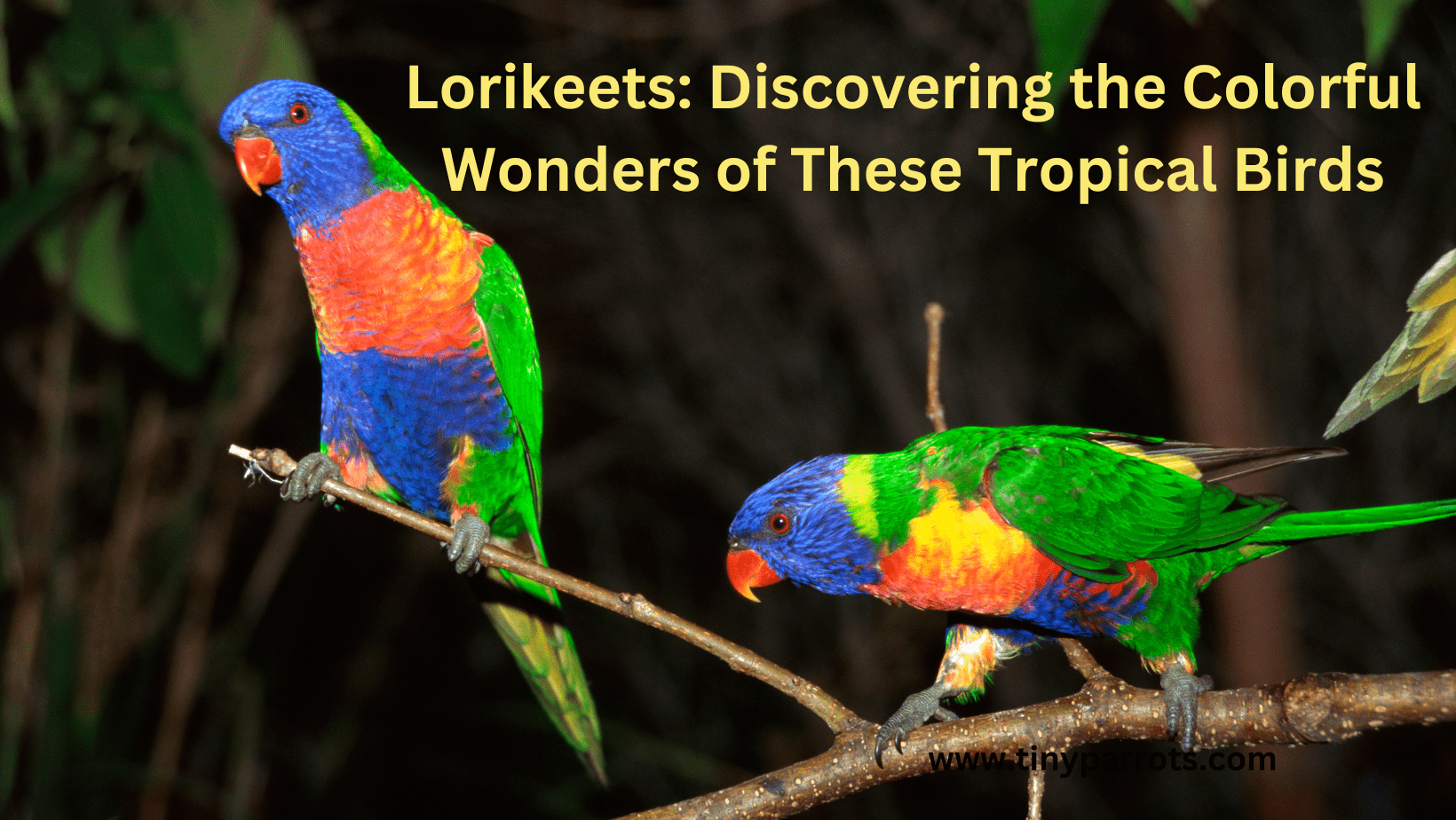Introduction
Are you intrigued by the vibrant and playful world of lorikeets? These enchanting birds have captured the hearts of bird enthusiasts and nature lovers alike. In this article, we’ll delve into the captivating world of lorikeets, exploring their origin, dietary habits, breeding age, and much more. Join us on this colorful journey as we uncover the secrets of these amazing creatures.
1. The Origins of Lorikeets
Lorikeets, also known as “nectar birds,” are a group of colorful parrots that primarily inhabit the regions of Australasia. Their name is derived from the Greek word “Lourakos,” which means “eater of sweets.” These small to medium-sized parrots are known for their vibrant plumage and sociable nature.
2. A Rainbow in the Sky: Lorikeet Appearance
Lorikeets are renowned for their striking appearance. Their feathers come in a spectrum of vivid colors, resembling a living rainbow. The combination of brilliant reds, blues, greens, and yellows make them a true spectacle to behold. It’s as if they carry a piece of the rainbow wherever they go.
3. Dietary Delights: What Do Lorikeets Eat?
These delightful birds have a sweet tooth for nectar, which forms the primary part of their diet. Lorikeets have specialized brush-tipped tongues, allowing them to feed on nectar from various flowers. They are also known to consume fruits, pollen, and insects, making their diet diverse and intriguing.
4. Breeding Age and Family Life
Lorikeets typically reach breeding age between one and three years old. Once they find a suitable partner, they form monogamous pairs. These avian couples build their nests in tree hollows, where they raise their young with tender care and devotion.
5. Lorikeet Species: A Multicolored Family
The Lorikeet family is incredibly diverse, with over 50 different species identified. Some of the most well-known members include the Rainbow Lorikeet, Scaly-breasted Lorikeet, and the Black-capped Lorikeet. Each species has its unique characteristics, colors, and habitats.
6. Lorikeets as Pets: What You Should Know
Lorikeets can make wonderful pets due to their charming personalities, but they are not for everyone. Owning a lorikeet requires a deep understanding of their dietary needs and social nature. Providing them with the right environment and care is essential for their well-being.
7. Lorikeets in the Wild: Habitat and Behavior
In their natural habitat, lorikeets can be found in various regions, including rainforests, coastal areas, and woodlands. They are social birds, often seen in flocks, chattering away as they forage for food and play together.
8. Threats and Conservation
These magnificent birds face numerous threats in the wild, including habitat loss and the illegal pet trade. Conservation efforts are crucial to protect their natural habitats and ensure their survival for future generations.
9. Lorikeets and Their Vocal Talents
Lorikeets are not only visually striking but also possess impressive vocal talents. Their calls and chirps are distinct, and they use them to communicate within their flocks. These vocalizations are a testament to their social nature.
10. Lorikeets in Popular Culture
These colorful birds have made their way into popular culture, with their vibrant plumage and engaging personalities. They are often featured in art, literature, and even as mascots for various organizations. Lorikeets have truly left their mark on the world of creativity and inspiration.
Conclusion
In conclusion, lorikeets are a fascinating and colorful addition to the avian world. Their vibrant appearance, unique dietary habits, and social behavior make them a captivating subject of study and admiration. Whether in the wild or as cherished pets, lorikeets continue to enchant people around the globe.
Frequently Asked Questions
- Can I keep a lorikeet as a pet?
- Yes, you can keep a lorikeet as a pet, but it’s important to understand their specific dietary and social needs to provide them with a happy and healthy life.
- Are lorikeets endangered?
- Some lorikeet species are indeed endangered due to habitat loss and other threats. Conservation efforts are essential to protect them.
- What is the lifespan of a lorikeet?
- Lorikeets can live for 15-25 years in captivity if given proper care.
- Do lorikeets mimic human speech like other parrots?
- Lorikeets are not known for mimicking human speech like some other parrot species. They have their unique vocalizations.
- How can I entice lorikeets to visit my garden?
- Planting nectar-rich flowers and providing a clean water source can attract lorikeets to your garden, allowing you to enjoy their presence.
Now that you’ve learned all about lorikeets, you’re well-equipped to appreciate these charming birds and perhaps even consider sharing your world with one of these vibrant, feathered friends.
5 Top Homemade Foods for Lorikeets: A Flavorful Feast for Your Feathered Friends
